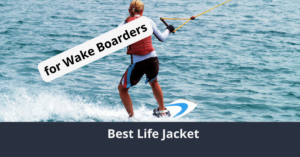If you want to go out on the water, take a few minutes to look at the best boating life jackets currently on the market. Life jackets aren’t just a suggested piece of equipment for boating; they’re required for some individuals. These boating life jacket reviews will help you determine which products are worth your time and which ones you can safely ignore.
In addition to in-depth reviews of seven great choices, this guide will also take you through some vital information you should know before buying life jackets. This includes details like the types of life jackets available, the advantages, disadvantages you may see on some products, and maintenance to ensure your life jacket stays in excellent condition.
Ultimately, safety is the most crucial factor when buying life jackets, so we reviewed the products below with that in mind. Extra features are excellent, but it doesn’t matter how many features a life jacket has if it doesn’t work when you need it.
(You might be interested in reading Best Non-Swimmer Life Vests)
Everything you will learn here
The Best Boating Life Jacket Reviews (Updated 2023)
Here are the best boating life jackets to consider. While this is a numbered list, these reviews are not in any particular order, and the numbers are not a ranking.
1. NRS Chinook Fishing PFD
- Perfect for kayak fishing, fly fishing and extended tours.. The mesh lower back is a great fit on high-back seats and provides ventilation when the weather gets warm.. The roomy front-entry design with eight adjustment points lets you customize the fit for comfort and security..
- Soft PlushFITƒ,› foam flotation conforms to your body as you wear it for unsurpassed comfort.. A coil tool retractor allows you to clip on line snips, forceps or other tools that you want to have handy.. Includes a D-ring on the back for attaching your net, plus a strobe holder loop for those low light conditions..
- Other outstanding features include rod holder loops, a knife lash tab, and multiple D-rings and attachment loops.. 16.5 lbs. design flotation..
The NRS Chinook Fishing PFD is a robust fishing-oriented personal flotation device. In layman’s terms, that means it has extra hooks and pockets. However, a few details help this product stand out from the competition.
The first (and most notable) trait is the fact that it uses a durable mesh for the lower back area, rather than being a solid pad the entire way around. This makes it much easier to sit on high-backed chairs without being pushed forward, and it’s a smart design choice for anglers.
The front-entry design of this life vest also has eight points of adjustment, making it easier to match it to your exact build.
The major drawback of this product is its price. This particular life vest costs significantly more than most other products on the market, so it’s not a good choice if you’re buying on a budget. You do get a lot of features for the money you’ll spend, but that’s worth keeping in mind as you evaluate your other options.
Pros:
- Outstanding overall product quality
- Has a lot of pockets and attachment points for equipment
- Slim enough to wear under most hoodies or jackets
Cons:
- Can be hard to find in some colors
- Significantly more expensive than other options
- Not a good value unless you’re going to use all the extra features
2. Onyx Unisex Belt Pack
- U.S. Coast Guard Approved Inflatable Belt Pack - Manual Inflation
- 16 gram CO2 charge provides 17 lbs. of buoyancy
- The oral inflation tube can be used by wearer to provide additional buoyancy up to 26.5 lbs.
Here’s a life jacket that doesn’t match what most people think of, and that’s a good thing. After all, innovation is how we create better products. This belt pack offers a slim, low-profile safety option with a pull tab for quick inflation. The U.S. Coast Guard does approve of products like these, so don’t worry that you’ll be violating any guidelines if you buy it.
Notably, this life jacket is reusable, although you’ll have to replace the CO2 canister and the safety tab if you inflate it. However, it does provide 17 lbs. of buoyancy naturally, with an oral inflation tube you can use to add another 9.5 lbs. of buoyancy. This is enough for almost any user, though you will require access to air in order to achieve maximum flotation.
Aside from its comfortably small design and easy inflation, this product includes a zippered pocket for storing small items like keys or a license. This pocket isn’t waterproof, so don’t store any electronic devices in it without an added layer of protection.
Pros
- More fashionable than traditional life vests
- Do not interfere with movement
- Easy to use in almost any circumstances
Cons
- Not as reliable as vests that always provide buoyancy
- Requires user activation to gain flotation
- Moderately expensive
3. Mustang Survival Corp Auto Activation PFD
- Approval: USCG – Recreational Type III (Meets minimum buoyancy rating of 22.5 LBS), Commercial Type V (Type III performance approved only when worn)
- Automatically inflates upon water immersion
- Exclusive Membrane Inflatable Technology (M.I.T.) creates a lightweight, flexible fit
This is a relatively rare (and expensive) product, but automatic activation vests have a lot going for them. However, the name isn’t entirely accurate to the product.
Like the second product on this list, Mustang Survival Corp’s PFD can inflate if you pull a handle. However, it also inflates automatically if it gets too wet, and it’s designed to keep your head above water even if you’re unconscious. That’s a valuable trait, especially when its lower profile makes it easier to wear other things at the same time.
Several other features help this product stand out. It includes an inspection window to see if you need to service it, and it provides a standardized 26 lbs. of buoyancy after inflation. As explained by the Life Jacket Association, this is enough to provide excellent flotation support even in rough conditions.
The major drawbacks of this product are the chance of misfiring and the overall cost. Even relatively light rain can cause this jacket to inflate, and replacements are costly. This definitely isn’t a life jacket to use on a budget, though its flotation power makes it a great option if you need to use it.
Pros
- Provides significantly more buoyancy than many other products
- The small design doesn’t interfere with other clothes
- It lets you know if it needs maintenance
Cons
- Relatively expensive
- Require some upkeep even if you don’t use it
- Can inflate when you don’t want it to
4. Hardcore Water Sports Adult Life Jacket
- Size - Life jackets for adults over 90 lbs. Adult universal size is adjustable to fit most adults that would wear a S, M, or L adult t-shirt with a chest size between 30"-52".
- Color - Cool, classic marine blue color doesn't attract insects compliments all things marine. Blue color black buckles and interior.
- Style - Open sides provide for a breath-able fit and provide benefits in paddle sports mobility. PFD is styled in a solid-color design with no visible logos on the outside of the paddlers vest.
This is a simple, practical, and traditional style for a life jacket, but sometimes simplicity is for the best. Loose siding and three bands for adjustment allow this life jacket to fit almost anyone over 90 lbs, up to a maximum chest size of fifty inches. The jacket itself comes in a relatively visible blue color, which is also nice to see.
While this vest doesn’t have the same pockets or extra features as some of the other options on this list, it also requires essentially no maintenance or upkeep even if you use it regularly. That, on top of being the closest thing to a universal design you can reasonably expect, makes this a decent choice for almost any situation.
One other thing to keep in mind is that this is a Type III vest. We’ll discuss the classifications in more detail below, but essentially, that means this life jacket is most suitable for calm, inland waters instead of ocean or river activities.
(You might be interested in reading our article specially on Best Extreme Water Sports Life Vests)
Pros
- Extremely flexible fit works with most adults
- The slim profile is comfortable to wear while sitting
- More affordable than most other options on this list
- Available in packs of multiple life jackets
Cons
- Not suitable for rougher sports
- No pockets or other accessories
- May not provide enough flotation for larger users
5. MTI Adventurewear Solaris PFD Life Jacket
- Reflective striping front and back add visibility in low light conditions
- High Back design with mesh lower section works exceptionally well with higher seat backs found on many recreational and sit-on-top kayaks
- Two large expandable bellows front pockets and small zippered pocket offer storage for day use essentials
This is a practical, foam-core life jacket with a variety of useful features that set it apart from others at similar price points. Notable features include reflective strips for improved visibility, multiple large pockets capable of holding an impressive amount of stuff, and a hat hanger loop. The key retainer clip in the front pocket is a subtle but useful touch.
Essentially, this product is what happens when you combine a regular life jacket with useful accessories, but without going as far as the countless pockets on a fishing life jacket. I’m particularly fond of the red coloring, which is bright and easy to see in most situations.
This product is flexible enough to fit most users, but it does have fewer points of adjustment in the front than the previous product. That’s not entirely a bad thing, mainly because it has adjustable shoulder straps on both sides, but it may affect certain body types.
Pros
- Smart design choices make this a good mid-range product
- It’s more reliable than inflatable life jackets
- It has reasonably exterior materials
- The mesh lower back is more comfortable on some chairs
Cons
- Too expensive if you’re not going to use the pockets
- The mesh back isn’t quite high enough to work with any seat
- Only 15 lbs. and 8 oz. of buoyancy, which is enough for most people but still a little low for this price
6. Body Glove Neoprene Life Jacket
- NEOPRENE - Ultra durable outer neoprene shell with inner tech lining, segmented beveled soft 100% PVC foam flotation (front) for maximum comfort
- ADVANCED TECHNOLOGY- Advanced air foam technology with interior glide-lock to help prevent ride up and spandex sides for increased mobility
- OVERSIZED – Oversized armholes for added mobility with an inside lumbar protection pad for comfort
Life jackets don’t fit women in quite the same way they fit men, so buying a gender-focused life jacket for personal use is often better. The outside of this life jacket is neoprene, which is an excellent outdoor-use rubber that holds up under UV light, oils, chemicals, and outdoor weather.
However, the part of this life jacket we like most is the irregular colored patterns on the front and back. These make the life jacket significantly more eye-catching, which is important if you’re floating away, and people are trying to find you. It’s slightly fashionable, too, but safety is always the most important thing.
The interior of this life jacket includes a lumbar protection pad for the lower back, which is a rare feature on life jackets, and one of the main reasons we decided to recommend this product over the competitors. It’s otherwise fairly standard, with two adjustable straps in the front and an oversized rubber pull tab for the zipper.
Pros
- The highly visible design is safer than single-colored life jackets
- Made with a particularly durable exterior material
- The front-focused foam makes it easier to stay facing upward
Cons
- No storage pockets despite the price
- No option to adjust around the shoulders
- Relatively expensive
7. Airhead Keyhole Life Jacket
- US Coast Guard Approved: This personal flotation device meets USCG requirements. Geared for calm inland waters. Ideal for when rescue is only a few minutes away
- Open Sided: Open sides allow for better ventilation to keep you cooler throughout the day.
- Buckles: Side release buckles open and close quickly to ensure safety and security on the water
If you need a lot of life jackets, it’s usually easier to buy in bulk. Airhead’s keyhole life jacket is a simple, straightforward design that goes around the head and provides front flotation to help you stay upright. They’re also affordable enough that you can get several of these for the same price as some other life jackets, which is a strong point in their favor for some buyers.
The most important thing to know about these life jackets compared to the others on this list is that they’re Type II, rather than the more-common Type III. That means they’re most appropriate for casual cruising and sailing, and they can turn some people face-up in the water if needed.
With 15.5 lbs. of buoyancy, this product offers competitive floating power to many of the other options on this list. The simple design is also more flexible, with the largest size designed to support people with a chest of up to 60 inches.
Pros
- The best option on a budget for calm environments
- Universal design fits almost everyone
- Can turn some unconscious people face-up
- Highly visible orange design
Cons
- Not suitable for rougher boating activities
- Not as good at staying on as other designs
- Won’t last as long as more expensive life vests
- Limits movement
Related:
Top 7: Best Life Vest for Non Swimmers For 2023
Boating Life Jacket Buyer’s Guide – Your Guide To Selecting The Best Product
Whether you’re going to go out on a lake or the ocean, knowing what details matter when selecting a life jacket is crucial to getting one that fits your needs. Even an otherwise-great product might fail if you use it in the wrong environment, so you can’t just pick a good one and call it a day. Here are all the things you should know before you go shopping.
Types Of Life Jackets
Currently, there are five types of life jackets recognized by the United States Coast Guard.
- Type I: Offshore: These life jackets are designed for use on the open ocean and in rough waters. These are among the most buoyant of all life jackets, and the USCG requires that they offer at least 33 pounds of flotation (for inflatables) or 22 pounds (for buoyant foam). Many companies go for at least 30 pounds, even with the foam.
- Type II: Near-Shore: Type II vests are designed for calm, inland waters where rescue is generally likely. These are broadly bulkier than Type III, but not as bulky as Type I, and require 33 pounds of buoyancy for inflatable versions and 15.5 pounds for foam. Many people buy these simply to meet USCG requirements.
- Type III: Flotation Aids: Type III life jackets, which are among the most common commercial products, offer freedom of movement and comfort for the average users. Foam versions provide at least 15.5 pounds of buoyancy, while inflatables offer at least 22 pounds. However, neither is as good at putting you into a face-up position.
- Type IV: Throwables: These are not life jackets. The Type IV category includes products like cushions and rings designed to be thrown to people who need help. Larger vessels often need at least one of these on board, but they are not a replacement for life jackets.
- Type V: Special-Use Devices: These life jackets are designed for specific activities, such as sailing or windsurfing. For example, they may feature unusual designs to accommodate common equipment used in a particular sport. Many describe themselves as possessing the performance of another category.
Functionally, most people buy Type II or Type III life jackets for general-use scenarios, while enthusiasts buy Type V devices for specific sports. Type I’s are relatively rare in comparison because most people don’t go far enough offshore to require them.
International Compliance
If you’re boating internationally, you may need to make sure your life jackets are acceptable in all areas you plan to visit. Aside from the USCG ratings, you may see ISO standards or CE (European Union) labels. Neither of these ratings ensures USCG approval, so make sure to research all potential destinations before you go shopping.
Styles Of Life Jackets
There are three general styles of life jackets currently on the market, and these are the most important decisions to make aside from the Type (as described in the previous section).
Style 1: Foam Vest
Widely considered the most traditional type of life jacket, foam vests have a solid, waterproof foam core that provides the listed amount of buoyancy. These life jackets are generally better for long-term use because they resist damage and can keep you afloat more-or-less indefinitely. They’re also warmer than other jackets, which can help in some scenarios.
Note that this alone does not guarantee survival in all scenarios where you’re tossed into the water. Rougher waters, for example, could turn you over if you’re unconscious and lead to drowning. That said, life jackets still drastically improve your chances of survival and rescue, so there’s a lot to be said for this style.
For more information on this topic, check out our interactive resource for US Drowning Statistics, Worldwide Drowning Statistics, and Drowning Prevention.
In addition to their other qualities, foam vests generally don’t require any maintenance aside from the occasional cleaning. They may deteriorate if you leave them too exposed to sunlight, heat, or cold, but that’s easy to fix simply by keeping them in a sealed or temperature-controlled environment. That said, they’re usually cheaper, so replacing them is easy.
The main disadvantage to foam vests is that they’re bulkier than the other styles, and you can’t compress them in any way. This is particularly awkward for some types of sporting activities, where you may need space to move around.
From a safety perspective, we recommend these life jackets the most.
Style 2: Inflatable
Inflatable life jackets are the other common style and consist of a lighter, flexible vest with an interior balloon. The exact details vary by model, but most use a pressurized canister filled with CO2. When you pull a tag on the jacket, the safety seal breaks, and the CO2 expands rapidly to fill the balloon and create buoyancy.
(You can read our article specially on Automatic Self Inflating Life Vests)
These life jackets are popular because they can be quite thin until you need to use them. With less chance of interfering in your activities, they’re a reasonably good way to stay safe. However, there are a couple of drawbacks that make them inferior, from a safety perspective, to foam vests.
First, most inflatable vests require you to inflate them manually in order to use them. This is a problem because if you’re knocked unconscious, you clearly won’t be able to do that. Some vests address this by inflating automatically if they get too wet, but those have a risk of misfiring.
(You can read our article specially on Best Inflatable Life Vests)
Second, inflatable vests are more vulnerable to damage than solid vests. In general, closed-cell foam can keep working even if the life jacket is punctured because it’s solid. Any holes in an inflatable vest will cause it to deflate rapidly and stop functioning.
Third, inflatable life jackets can deflate over time as the gas inside escapes. Many include a manual way to blow more air in and keep using them, but this is fundamentally inferior to a flotation aid that needs no extra work to keep functioning.
Finally, inflatable vests need more maintenance, and part replacements, than foam vests. The carbon dioxide cartridges can be expensive, too, which means these can be quite expensive over time, even if you don’t use them.
All of this together may sound like I’m extremely harsh on inflatable life jackets, and to some extent, that’s true. While many of them are still great products that work for most users, the simple truth is that inflatable life jackets just aren’t as good from a safety perspective. If you’re willing to accept that risk, though, you’ll have far more flexibility.
To finish on a positive note, inflatable jackets have the advantage of being noticeably cooler than solid foam options. In fact, many of them are thin enough that you’ll barely notice you’re wearing them. This is particularly useful on hot summer days when a thicker vest could become dangerous, so there is a real advantage to getting inflatable over foam.
Style 3: Specialty Designs
Specialty designs are a small party of the market and include some Type V life jackets, as well as a variety of foam and inflatable options. The #2 product on our list above, the Onyx inflatable belt vest, is a good example of specialty designs. It’s even more compact than most inflatable vests, but it still offers quick and easy access to buoyancy as-needed.
Specialty designs are usually purpose-built to address some problem or goal. In many cases, this means meeting regulatory standards while still enabling possibilities like wearing other vests or moving in ways that bulkier products would prevent.
If you can think of a well-known aquatic activity, chances are someone has made a specialty design for it, even if their products aren’t sold in your local stores. You may need to browse the internet to find these, but there are more of them out there than many people realize.
If you want to compete in any events, try asking the organizers for specific brands that they recommend. This can help you locate products that are appropriate for your needs without accidentally disqualifying yourself from the competition for having unapproved gear.
Advantages Of Life Jackets
They’ll keep you alive when you might otherwise drown. That’s why they’re mandatory for most activities and situations out on the water.
More seriously, life jackets offer a variety of different advantages depending on the type and design you choose, and this will have an impact on your overall experience. Here are some of the advantages you should look for when deciding which life jacket to buy:
- Pockets: Most pockets on life jackets are not waterproof, but do come with zippers or snaps so you can close them. Pockets have essentially no impact on the performance of life jackets, so bigger is generally better. Standard life jackets have no pockets, mid-range models usually have two or three, and fisher life jackets may have six or more.
- Adjustment Points: Most life jackets have at least two points of adjustment where you can modify the sizing. Other life jackets may have four, six, or even more. Jackets with adjustment points on the shoulders tend to be particularly flexible and are good first options for people with unusual body shapes.
- Drainage Systems: Most life jackets repel water, either with solid interior layers or closed-cell foam that essentially bounces water molecules away. However, some fabric and mesh areas can get waterlogged. Drainage systems speed the drying process and can help prevent mold and other problems.
- Durability: Few life jackets are capable of dealing with punctures from branches or similar pointy objects, but high-quality jackets will use thick cloth or rubber that can stand up to extended use in saltwater environments. Durability always matters for safety equipment, but especially so if you plan to use your life jacket frequently.
Disadvantages Of Life Jackets
There are no disadvantages severe enough to make wearing a life jacket a bad idea in any situation where local laws require them. However, individual products may have disadvantages that can make them a poorer choice for your needs. Here are the most common disadvantages you may find.
- Bulk: Life jackets have different levels of bulk depending on their quality. In this context, bulk refers to the ease of wear and how much they inhibit your movement. Type I life vests are noticeably thicker than many other types, while Type III and Type V are usually much more comfortable to wear for extended periods.
- Repairs: Inflatable life jackets usually need repairs or part replacements after use. Some parts, such as CO2 canisters, may wear out over time even if you don’t use them. That can lead to added costs and frustrating periods of not being able to use your life jackets.
- Sizing: Life jackets usually conform to strict sizing requirements, so they may not work on people who have uncommon body shapes. You can mitigate this a little with life jackets that have many points of adjustment, but there are limits to that.
- Inability To Flip People: No life jacket is perfect at turning people face-up, although some are better at it than others. This is important because if you fall unconscious, flipping could be the difference between life and death. From a pure safety perspective, Type I jackets are the best at this, and therefore the best products overall.
Safety Tips
Here are some safety tips to keep in mind when using a life jacket:
- Tighten The Straps: If your life jacket is loose, the power of its buoyancy could pull it away from your body, or even off of you entirely. Life jackets should be snug enough that they don’t move around more than absolutely necessary. Always adjust the straps of your life jacket as soon as you put it on.
- Wash After Use: Washing something may sound silly after you’ve been in the water all day, but your life jacket could contain residual chemicals, bacteria, dirt, or plant matter. A thorough spray with clean water, followed by gently drying the exterior, can get rid of a lot of problems.
- Memorize The Instructions: All you have to do is put it over your head and clasp the buckles, right? Well, most life jackets are slightly more complicated than that. Reading and memorizing their instructions is essential for addressing any specific issues you’ll need to know about owning, using, and storing a given life jacket.
Best Boating Life Jackets Comparison Chart
| Product Name | Price | Sizes | Safety | Unique Features |
|---|---|---|---|---|
| NRS Chinook Fishing PFD | $-$$ | M, L, XL, XXL, XXXL | Eight adjustment points customize fit for comfort and security | Slim enough to wear under most hoodies or jackets |
| Onyx Unisex Belt Pack | $ | UNV | US Coast Guard Approved | Easy to use in almost any circumstances |
| Mustang Survival Corp Auto Activation PFD | $$ | L, XL | US Coast Guard Approved Type III | 1-fold, easy to repack design |
| Hardcore Water Sports Adult Life Jacket | $ | XL, UNV | US Coast Guard Approved Type III | Slim profile is comfortable to wear while sitting |
| MTI Adventurewear Solaris PFD Life Jacket | $ | S, M, L, XL, 2XL, 3XL | Hat hanger,key retainer,adjustable sides and adjustable shoulder straps | Reasonably exterior materials |
| Body Glove Neoprene Life Jacket | $ | M, L, XL, 2XL | US Coast Guard Approved | Made with a particularly durable exterior material |
| Airhead Keyhole Life Jacket | $-$$ | UNV, FS | US Coast Guard Approved | Universal design fits almost everyone |
Wrap Up
By now, you have the information you need to make an informed decision about buying a boating life jacket. Before you go, though, here are a few final pointers to keep in mind before you go shopping.
First, boats can travel at higher speeds than many other aquatic activities expect. This means you’re in more danger if you fall out of the ship, and, therefore, it’s better to have a more-buoyant life jacket that can help turn you upright if you get knocked unconscious.
Second, do not rely exclusively on life jackets. Additional safety equipment, such as a long-range waterproof radio, can significantly increase your chance of rescue.
Finally, practice swimming with a life jacket on. Swimming with a life jacket is somewhat different from swimming without one, and the more familiar you are with it, the easier it will be to respond in an emergency. There’s no such thing as being too prepared.
Last update on 2024-07-27 / Affiliate links / Images from Amazon Product Advertising API









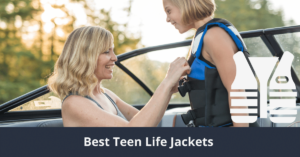
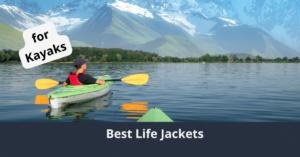
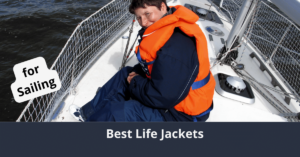
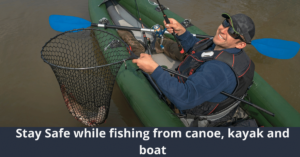
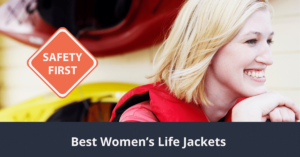
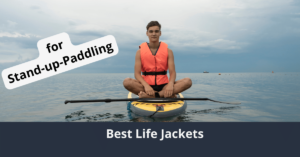



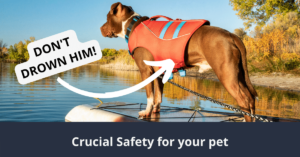
![7 Best Jet Ski Life Jackets with awesome fit [2023 guide] 20 Best Jet Ski Life Jacket](https://insmoothwaters.com/wp-content/uploads/2022/09/Best-Jet-Ski-Life-Jacket-300x157.png)
